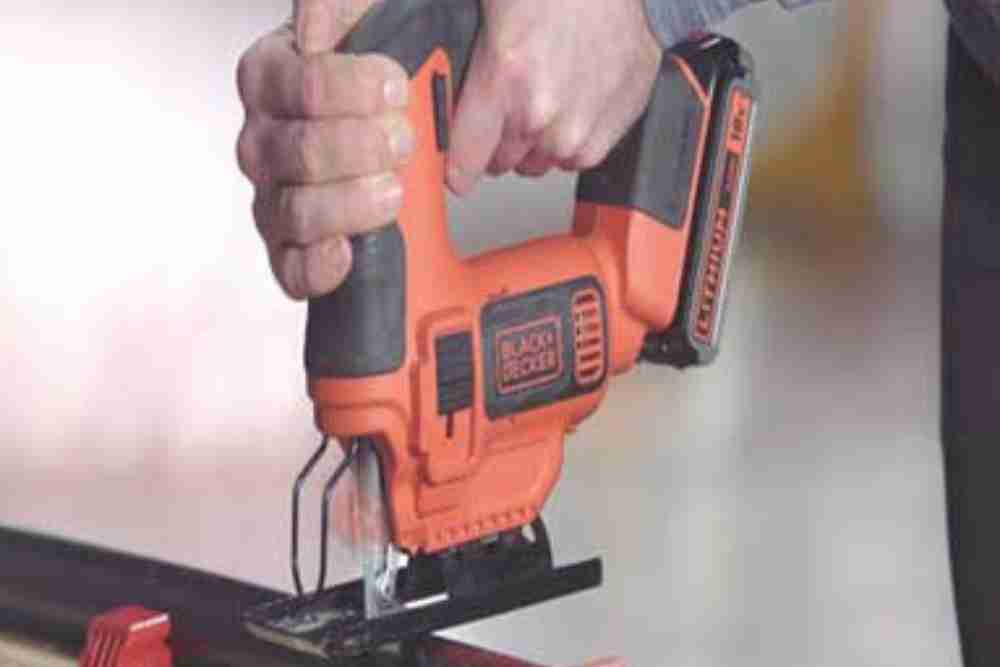A jigsaw is used for cutting various materials in different shapes and patterns. Jigsaws are versatile tools that are commonly used in woodworking, metalworking, and construction projects.
They are designed to make intricate cuts, allowing users to create curves, angles, and intricate designs in materials such as wood, metal, and plastic. With a jigsaw, you can easily make straight, curved, or beveled cuts in a wide range of thicknesses.
The jigsaw’s fine-toothed blade moves up and down in a rapid, oscillating motion, enabling precise and controlled cutting.
Due to their versatility and ease of use, jigsaws are essential tools for both professional craftsmen and DIY enthusiasts.
Whether you’re creating decorative patterns, cutting out shapes, or making intricate cuts, a jigsaw is an invaluable tool.

Understanding The Basics Of A Jigsaw
A jigsaw is a versatile power tool used for cutting curved and intricate shapes in various materials such as wood, metal, and plastic.
It operates by moving a sharp, reciprocating blade up and down rapidly. With its ability to make intricate cuts, a jigsaw is commonly used in woodworking, crafting, and DIY projects.
The tool’s history dates back to the early 1940s, and over the years, it has evolved into several types and variations.
Corded jigsaws offer consistent power, while cordless models provide mobility and convenience. Some jigsaw variations include orbital action, which enhances cutting efficiency, and variable speed settings for precision control.
Whether you’re a professional carpenter or a hobbyist, understanding the basics of a jigsaw is essential for achieving precise and accurate cuts in your projects.
Applications And Uses Of A Jigsaw
A jigsaw is a versatile tool used primarily for carpentry and woodworking projects. It is commonly used for creating intricate curves and shapes in wood, as well as cutting various types of wood.
The jigsaw is also perfect for making straight and bevel cuts, making it essential for DIY home improvement projects.
Additionally, it is handy for installing laminate flooring and cutting tiles and countertops. The jigsaw is also widely utilized in building shelves and cabinets, as well as for metalworking and metal fabrication tasks.
In metalworking, it is particularly useful for cutting sheet metal and pipes, as well as shaping and trimming metal parts.
Furthermore, the jigsaw can handle non-ferrous materials with ease. Its versatility and precision make it an indispensable tool for any woodworking or metalworking enthusiast.
Tips And Techniques For Using A Jigsaw
Jigsaws are versatile power tools used for various cutting tasks. One of the essential tips for using a jigsaw is selecting the correct blade type according to the material you’re working with. To ensure safety while using a jigsaw, proper handling is crucial.
Always wear protective gear and secure the workpiece firmly. Knowing some cutting techniques can enhance your precision and efficiency with the tool. For straight cuts, use a straightedge guide or a clamp to stabilize the jigsaw.
Troubleshooting common issues such as blade binding or wandering can further enhance your jigsaw skills.
Regular maintenance, like keeping the blade sharp and cleaning the tool after use, will prolong its lifespan.
By following these tips and techniques, you can become proficient in using a jigsaw for a variety of applications.
FAQs
What Can You Do With A Jigsaw?
A jigsaw is a versatile power tool for cutting various materials in curved or straight lines accurately.
What Materials Can A Jigsaw Cut Through?
A jigsaw can cut through materials like wood, plastic, metal, laminate, and ceramic tiles.
Is It Worth Having A Jigsaw?
Yes, it is worth having a jigsaw tool for its versatility and ability to make precise cuts.
